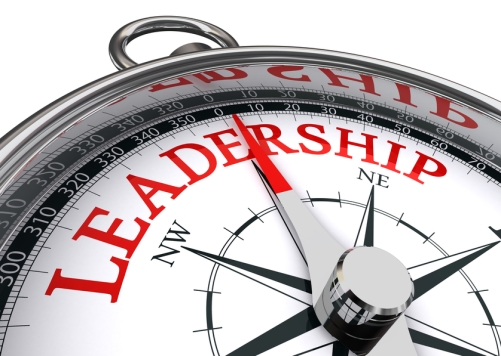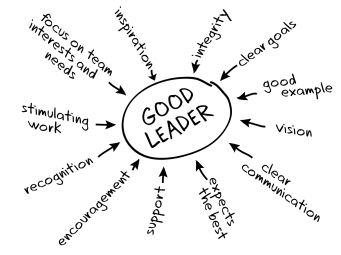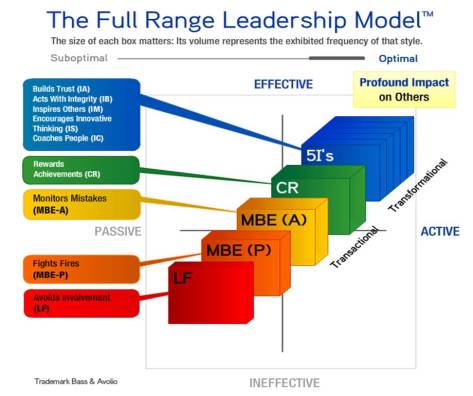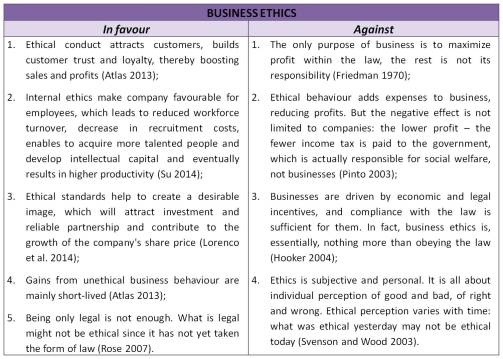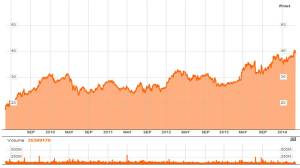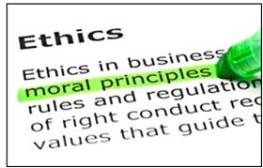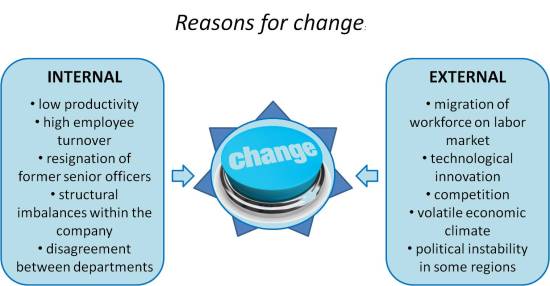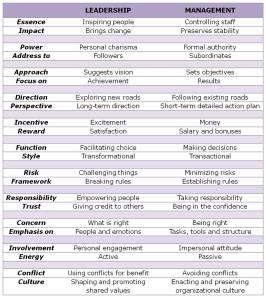In this post I will share my personal vision of leadership and my leadership experience
Modern business world is highly competitive and dynamic, where such intangible assets as intellectual capital, corporate culture, talent, skills and leadership come to play a key role in sustaining competitive advantage (Mouritsen 1998). Leadership ability is now becoming one of the most called-for features in employees.
Who is a leader?
I believe a true leader is one, who creates the world others would want to belong to. Speaking in academic terms, a leader has vision. This view was also developed in the book by Robert Dilts “Visionary leadership skills” (1996), and this is what I feel is making the essence of being a leader. Leading in life as well as in business is about the ability to influence people, inspire and get them involved.
Born or bred?
Drucker argues “leadership cannot be taught or learned” (1954:194) – it is a matter of talent and charisma. However, more recent research has shown the contrary. In fact, it was discovered, that about 70% of leadership skills are acquired and not predetermined by the genes (Arvey et al. 2006).
In my opinion, leadership ability is a combination of inborn features and learned skills, of charisma and passion with practice and education.
My vision of leadership
My vision of leadership was influenced by two people. The first person who has strongly impressed me is the professor of International Public Relations and European Studies at Moscow State University – Dr. Jumber Asatiani.
The second person who has made me reflect on leadership is Genevieve Boast – the founder of the Beyond Human Stories, the company coaching individuals and organizations to bigger achievement and creating their own story of success.
These people are great leaders themselves, and their life stories made me think of what I can do to change mine. To me, this is real transformational leadership. They transformed my understanding of leader: I used to believe that only a few people can be leaders; now I know – everyone can be. You can become a leader by telling a story of your own life lessons that would resonate with people and motivate them.
How to be a good leader
- Vision – you can only attract followers if you know what you want and where to go. If there is nothing to share with the world – no one will be interested. There is no right and wrong idea, but you must have one.
- Communication – a leader needs to be able to deliver ideas clearly. Communication is the cornerstone of effective leadership, because all leader’s roles involve communication: giving advice, support and feedback, establishing interpersonal relationships, discussing the vision, motivating – everything goes through communication.
- Influencing – vision is essential, but not enough. It is also necessary to be able to interest people, to grasp their attention so that they want to follow. Interestingly, it was found that financial incentives do not always work as good motivation, because they often have a negative impact on performance, and better incentives are autonomy, mastery and purpose (Pink 2010).
My leadership style and experience
Every leader is different, and therefore, there are different leadership styles recognized.
According to Mullins, (2013) 3 general leadership styles can be defined: autocratic, democratic and laissez-faire divided on the principle of power distribution; Hersey and Branchard (1993) distinguish situational leadership style, based on the readiness of followers to participate; Kreitner developed the concept of inspirational or visionary leader, emphasising the role of personal charisma in leading people; Kouzes and Posner (2011) have come up with the concept of exemplary leadership, which can be easily learned through a set of practices.
The most widespread classification, though, is elaborated by Burns (1978), who identifies 2 major leadership styles: transactional and transformational, with the difference between them being in focus either on action/task or on people/team.
The idea that a truly effective leader should use a combination of leadership styles in certain proportion. suggested by Bass and Avolio (1994), is summarized in “The Full Range Leadership Model” which is built on the comparison of transactional and transformational leadership.
My leadership style is closer to transactional, according to the peer feedback received from my team mates. As a group leader I am described as responsible, effective communicator, supportive, showing direction, focused on the task and having structure. At the same time, many people recognize I always have a clear vision and that is why I am frequently chosen to lead teams I work with.
However, I need to develop the ability to motivate people, because it is an essential leadership skill, as above-mentioned. Since teamwork is now inevitable in nearly any organization, I am determined to develop myself to become a more effective leader.
Conclusions
The overall blog covers different aspects of leadership, explores leadership models and examples of powerful world-renowned leaders.
Globalization and competition are new business realities, and organizations no longer need simply managers, they are now looking for leaders – leaders, who are able to manage diversity in teams and benefit from it, who are capable of leading organizational change confidently and effectively, who are ethical and will embed ethics into the corporate culture.
As I have learned from life experience and this MBA course – the ideal formula of successful leadership does not exist. Each person is individual and needs individual treatment; each leader is a unique personality with its strengths and weaknesses; each team needs a different leadership style, and different circumstances require situational approaches.
I am going to continue developing my leadership skills and shape my personal leadership style.
***
References:
Arvey, R.D., Rotundo M., Johnson, W., Zhang, Z. and McGue, M. (2006) “The determinants of leadership role occupancy: Genetic and personality factors” Leadership Quarterly 17 (1) 1 – 20
Bass, B. M., and Avolio, B. J. (1994). Improving organizational effectiveness through transformational leadership. Thousand Oaks: Sage Publications.
Burns, J.M. (1978) Leadership. New York: Harper & Row
Dilts R.B. (1996) Visionary leadership skills: Creating a world to which people want to belong. Capitola: Meta Publications
Drucker, P.F. (1954) The Practice of Management. New York: Harper & Brothers
Hersey, P. and Blanchard, K.H. (1993) Management of organizational behaviour: utilizing human resources. 6th edition. Harlow: Prentice Hall
Kouzes, J.M. and Posner,B.Z. (2011) The five practices of exemplary leadership. San Francisco: The Leadership Challenge
Kreitner, R., Kinicki, A. and Buelens, M. (1999) Organizational behaviour. New York: McGraw Hill
MLQ (2007) The full range leadership model [online] available from <http://www.mlq.com.au/flash_frlm.asp> [3 April 2014]
Mouritsen, J. (1998) Intellectual capital: the logic of an “economy of creativity”. Working paper. Copenhagen: Copenhagen Business School
Mullins, L.J. (2013) Management and Organisational Behaviour, 10th Edition. Harlow: Pearson Higher Education
Pink, D.H. (2010) Drive: the surprising truth about what motivates us. Edinburgh: Cannongate Books
